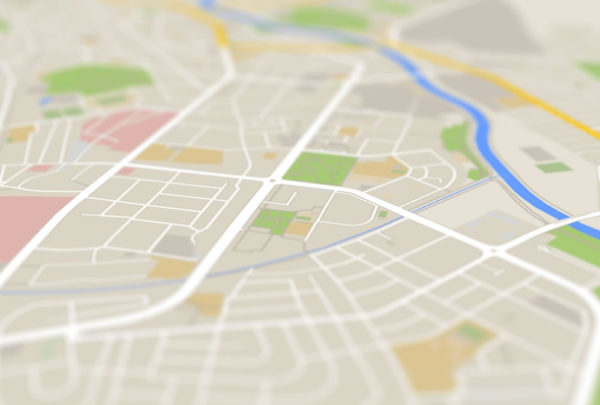For history teacher Mariana Ramirez and English teacher Alice Im, education is viewed as engaging young people in the world, helping them speak up, ask questions, and contribute. Rather than racing to cover the content, these two spend a little time, dig a little deeper, and engage the students. GIS is a key part of this.
Every school year begins with these teachers, armed with computers, the internet, and a map waiting to be enriched, guiding 11th graders from the Math, Science, and Technology Magnet Academy at Roosevelt High School in Los Angeles as they work on their projects. Understanding their world is the general task, but they must focus on a specific issue; work in teams; be scientific in gathering social data; analyze it mathematically; and then present it so others see and grasp its impact.
Using Challenges as GIS Project Opportunities
Roosevelt is a generations-old school in Boyle Heights—a storied community in East Los Angeles. Students in the Magnet Academy come by foot, skateboard, and bus, some needing over an hour and multiple bus transfers. The Academy is over 90 percent Hispanic, and over 90 percent free or reduced lunch. Many of Roosevelt’s students speak Spanish at home, and many will be the first in their family to go to college. Physical assets in the school beg for upgrade, but Ramirez and Im use the challenges in their world as opportunities to engage the students.
Each year’s research project explores social justice, and they touch on the ideas through fall and winter as they build the mapping, data, and thinking skills needed for their big GIS project.
Over the years, student have tackled serious and vexing issues, such as:
- Gentrification and community displacement
- Patterns of pollution, income, and political power
- Availability of green space
- Relationships between community and law enforcement
- Public art as heritage relative to commercial billboards
- Fast food chains versus family-owned food trucks
- Food deserts, public gardens, and plantable space
- Expressions of prejudice against race, religion, sexual identity
To form some context around these serious issues, these teachers have turned to Geographic Information Systems (GIS). Why is GIS so impactful in understanding communities’ most difficult issues? And why is this skillset important to teach today’s students?
(Next page: GIS projects as community-building)
When gathering information and examining data related to any issue, GIS helps provide an important framework for placing that data into context and deriving insights. GIS and spatial analytics allows students to see interactions by mapping that data; providing a glimpse not only into physical location, but how places are related to one another and how they interact. GIS helps detect and analyze patterns, leading to better predictions about trends. Using spatial components of any data set gives a more holistic view of the problems at-hand, enhancing decision-making. And, geo-analytics empowers the concurrent study of attributes and spatial relationships to discover anomalies in data and identify outliers. As we strive to enhance critical thinking skills in our students, this type of analysis is a powerful skill.
GIS Project Details
During the project, the entire class hops onto buses and heads an hour east to the headquarters of Esri, makers of the ArcGIS technology supporting their project. Student groups give lightning talks on their topics (with every student speaking), to Esri President Jack Dangermond, other Esri staff, and a growing audience of regional educators and influencers. They hear about GIS and GIS people—from Dangermond and others—and see how their work can inform the community, illuminate patterns, and spark change. As Jack Dangermond told the Roosevelt students, “Understanding precedes action.”
By springtime, the students have used numerous maps and apps, made maps, created data, built tables of geographic features and published them online, and crafted custom presentations. When the research project launches in earnest, some learn their topics offer too much data, while others grapple with the opposite—a question needing intensive data collection by cataloging objects or surveying people.
As the project nears its culmination, the adjoining classrooms of Im and Ramirez buzz for a few weeks as students tweak topics; wrestle with data; scour banks of diverse layers, seeking patterns and relationships; and share techniques they have learned. Even outside of class time, students collaborate across a spectrum of devices (often several at once) honing their maps, writing their 20-page documents, and crafting an hour-long lesson they will teach twice to school and community.
This project was another resounding success, with five students invited to present their findings to the California Department of Education on GIS Day, November 16.
Any school can take advantage of the latest mapping technologies and training for their students and teachers alike, and use these same tools for free. As part of President Obama’s ConnectED Initiative, Esri has made available for no cost dozens of starting activities and maps called GeoInquiries. Esri has also offered for free to every US K12 school an ArcGIS Online Organization account, just like what Roosevelt uses, and over 4000 Organization accounts are in place in schools.
With training, technology, and lessons created, any school can offer their students the benefits that come from a strong technology-based education.
- 3 ways to avoid summer learning loss - April 19, 2024
- High school students say AI will change the workforce - April 18, 2024
- Motivating students using the Self-Determination Theory - April 17, 2024


